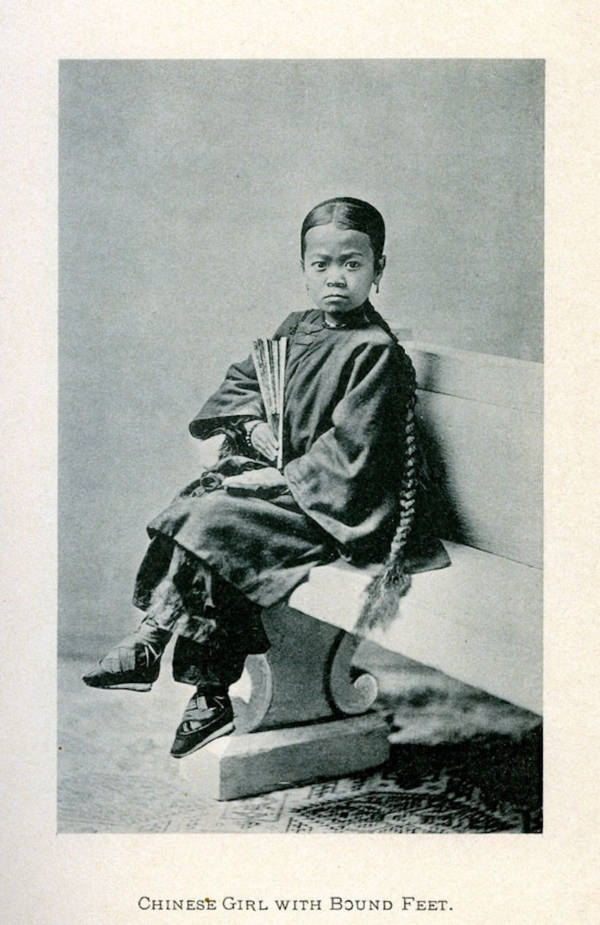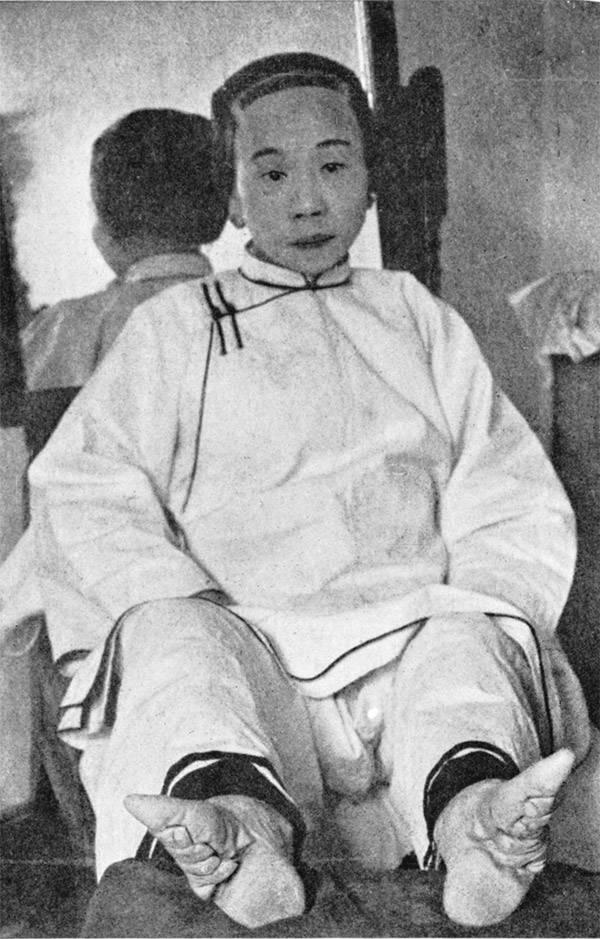Chinese foot binding was seen as a sign of sophistication and being upper-class. Women without bound feet had little chance of marrying into nobility.
Cultures around the world have always had different standards of beauty. The Mayans used to deform their children’s skulls to produce a cone shape. Japanese women used to blacken their teeth after marriage. And in Imperial China, nothing was considered more erotic than a woman having tiny feet.
No one’s completely sure when or why the Chinese became infatuated with the size of a woman’s foot, but legend attributes the practice to the peculiar tastes of an emperor.

Wikimedia CommonsAn X-ray of bound feet.
As the story goes, a Chinese Emperor was quite taken with the beautiful, tiny feet of one of his court dancers. Upper-class women, hoping to attract the attention of an emperor themselves, starting binding their own feet to make them smaller. From there, the practice spread to the rest of the country.
Unfortunately for women, the process was extremely painful. It usually started when a girl was young, typically between four and nine years old.

Wikimedia CommonsYoung Chinese girl with bound feet.
First, the feet were soaked in a mixture of animal blood to soften them. Then, the toenails were cut back to prevent infections. After that, the toes were twisted downward towards the bottom of the foot, shattering the bones.
The broken toes were then tightly bound with cotton strips, preventing them from healing properly. Over the next few months or years, the process would be repeated every few weeks with the aim of making the feet as small as possible.

Wikimedia CommonsShoes meant for women with bound feet.
If a family could afford it, they would hire a professional foot binder. The idea was that a professional foot binder would be less likely to be moved by the girl’s agony than a family member, which would let them bind the feet tighter.
The process was also extremely dangerous for the girl’s health. The toenails frequently grew back into the swollen flesh of the feet, which lead to horrible infections. In addition, the lack of circulation in the feet often caused gangrene, but this was actually seen as a benefit. The gangrene would cause the toes to rot and eventually fall off the feet, making them even smaller.
Sometimes, the binders put shards of broken glass up against the cloth in order to deliberately introduce infections and cause the toes to fall off. If these infections spread to the bloodstream, as they often did, then the girl was at risk of dying from septic shock. Around 10% of girls subjected to foot binding died as a result of sepsis.

Wikimedia CommonsA woman with bound feet.
The ideal for how the foot was supposed to look was the “Golden Lotus Foot,” measuring about 4 inches. Women with feet this small were considered extremely desirable to men. The small, swaying steps that women with bound feet had to take were considered very seductive. Even the broken, twisted feet themselves were seen as erotic.
A Qing Dynasty sex manual actually lists 48 different ways that men could incorporate the bound feet of their lovers into sexual activity.
There was a belief that the folds in the feet stimulated the growth of folds in the vagina, which supposedly made sex with women who had bound feet more pleasurable. Even the horrible odor caused by bacteria growing in the folds of the feet was considered sexually stimulating.

YouTubeAn elderly woman who went through Chinese foot binding displays what is left of her feet.
Of course, the reason people put their daughters through this horrible process wasn’t just because they thought it made them more attractive sexually. Women with the ideal foot size were very desirable for marriage. Because having bound feet was a sign of sophistication and being upper-class, women without bound feet had little chance of marrying into nobility.
So, foot binding was a way for families to increase the odds of their daughters marrying well. But other historians have also argued that foot binding meant that the women would be entirely dependant on their fathers and husbands, and thus that it was a way of controlling women.
Whatever the reason, Chinese foot binding probably persisted for more than 1,000 years, a reminder of how much society can sometimes expect women to suffer for beauty.